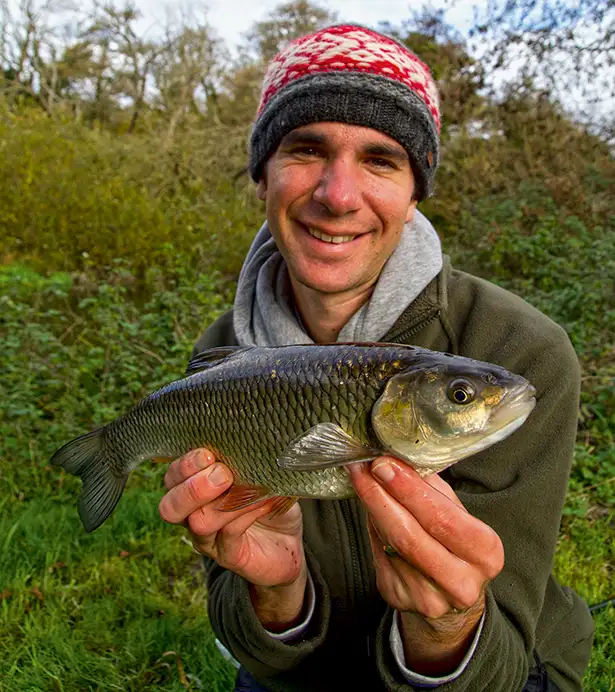This is a demo store. No orders will be fulfilled.
Chub Fishing With Cheese Paste


SAY CHEESE FOR CHUB! It’s cheese with added extras, as Gareth Goldson reveals his top paste tactics for chub.
Chub love cheese paste, but since the dawn of the boilie and halibut pellets it’s become a very underused bait. This is a real shame as it’s still an awesome choice, especially when fishing small, intimate waters such as the River Wensum, which is where we met former Drennan Cup winner Gareth Goldson.
He explained that small rivers like the Wensum are full of features like overhanging bushes and fallen trees, plus there are numerous bends and slacks as the water meanders through fields and woods, where chub can use the bankside cover or the large weed beds for sanctuary while waiting for food to drift by.
However, as we started the walk up to the top on the stretch he had chosen to fish for the day, he commented that often you will catch chub on a featureless stretch of water like a long straight, especially on a pressured day-ticket venue, as the fish shy away from the obvious swims.
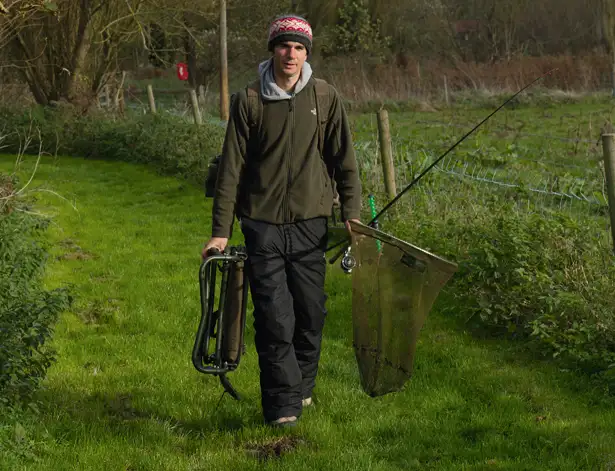
Paste fishing for chub is a mobile tactic, which explained the reason why we headed up to the top boundary once we reached the river. Gareth would start his search there and slowly work his way downstream, exploring each likely swim for a fish, where it was probable that he would be looking for a single bite. It’s certainly not a tactic that requires a lot of gear. He had a feeder rod, a reel loaded with 8lb mono, a landing net, a rod rest and a lightweight seat. The only other item was his rucksack, in which he carried his tackle essentials, waterproofs and refreshment.
Before starting, Gareth explained the setup that he would use, and it could not have been more simple. He had made a link leger by using a short length of mono with a small swivel tied on at one end and a large SSG shot pinched on the other. This was all the weight he would need to hold bottom on the river, which was held back by the weirs at the end of the stretch so there wasn’t much flow. If the current did increase he would simply add another SSG. The small swivel was then threaded up the reel line and a float stop added, which acted an adjustable stop that allowed him to change the distance from the weight to his hook bait. Another small swivel was then tied to the end of the reel line.

For the hook link Gareth used a 15in length of supple 10lb braid – the soft line allowed the bait to act more naturally in the water – to which he had fixed a small piece of hair-rigged cork on a size 10 Drennan Boilie hook, which he explained had a beaked point that gave a good hook-hold when a fish was hooked. This was then attached to the reel-line swivel.
He added that the piece of cork had two advantages over just moulding a piece of paste on to the hook. Firstly, the paste is easier to mould around the cork and it allowed him to position the hook so that its point was fully exposed, and secondly, the cork gave the bait a little buoyancy, so it moved in the flow like a natural bait. However, he added that you needed to trim it down, otherwise the paste would pop up too much in the water.

Cheese paste recipes are varied, but they need to be as smelly as possible, as it’s the pong that gets the chub interested. Gareth had his own special mix, which consisted of the usual bread and cheese – he used three liquidised slices, including the crusts, and a small slab of blue Stilton – but to give his paste some extra punch he also included a teaspoon of Betaine and a crushed clove of garlic. Once combined it created a stiff, sticky and smelly bait that would leach flavour in any coloured water.
That’s another great advantage of a smelly cheese paste – it will catch fish from a flooded river when fished in slack-water areas, as well as being a great bait option on clear-water venues in the cooler months.
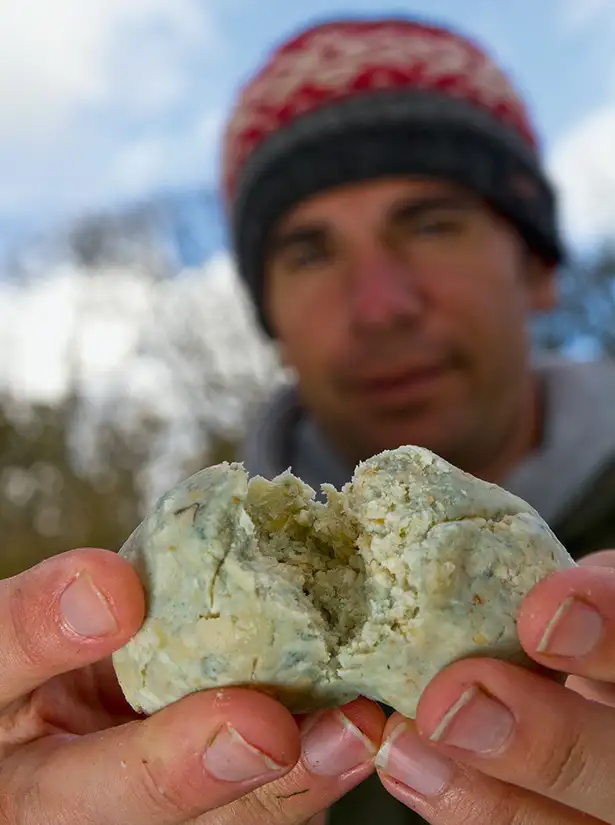
Gareth had a tennis ball-size lump of paste for his session, which he had prepared the previous evening and placed in the fridge overnight in a sealed plastic bag. Chilling the paste also allows the bread and cheese to absorb the other ingredients. Another big advantage with the bait is that you don’t need to take a mass of it for a day on the river. With smell being the key to fishing cheese paste, Gareth pointed out that there was little need to prebait a swim before fishing it, as he wanted the fish to home in on his bait and not focus on freebies that would drift downstream of the swim and pull the fish with it. It was all about the single bait and casting to the features where he believed the fish to be. Having said that, there are a few occasions where he would feed a few bits of paste, such as in swims where the far bank is heavily covered with overhanging or even fallen trees. These areas might hold a lot of fish, so a few freebies fed into the top of the swim would get the fish competing, and looking for more.

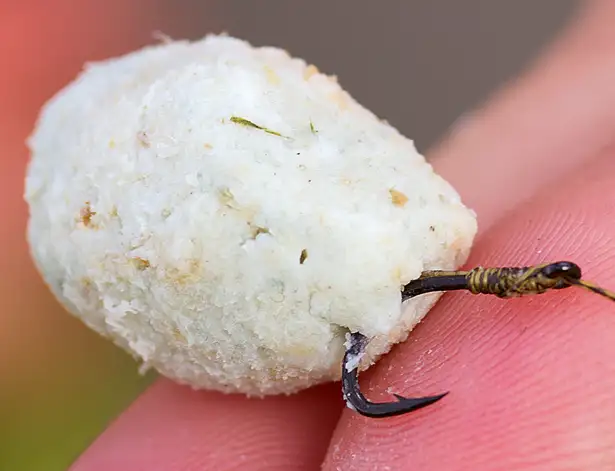
The Session The first swim at the top of the stretch had little in the way of visible features, but Gareth pointed out that as it was a bit of a hike from the car park it received very little angling pressure – borne out by the lack of a worn bank – so it was worth a cast or two before he moved down to the next swim. After casting a little downstream – just past halfway down the swim – he placed his rod in the rest so that the tip was high, and most of the line was kept out of the nearside flow. He added that you do need to leave a little slack in the line to allow the weight to settle, and for the fish to feel as little resistance as possible when it picks up the bait. Chub especially have a habit of pecking at bigger baits with their lips, and often a bite is missed as the fish is just testing it with its lips.
Gareth pointed out that once a fish started to show interest in the bait you had to ‘sit on you hands’, ignore the little knocks and wait for the rod to arch over, otherwise you would keep missing bites and end up getting frustrated.
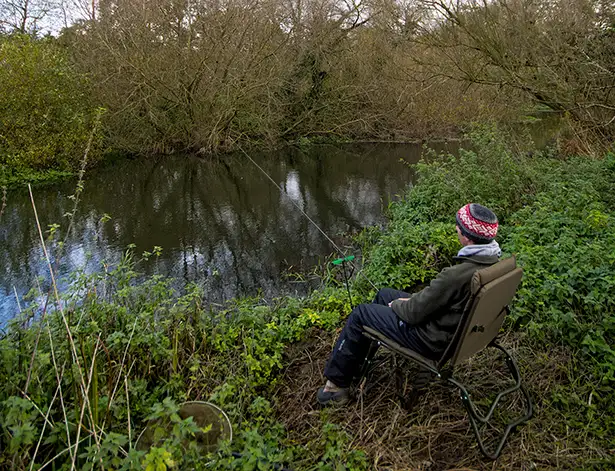
Those little knocks might also come from small fish worrying the bait, so it he didn’t get a positive take from a chub within 20 minutes, he would move on to the next swim, as bites from chub when fishing cheese paste will usually come quite quickly if the fish are there and feeding.
The next few swims failed to produce a fish, but while he was waiting for a bite, Gareth explained that, depending on the conditions, you can catch a chub at any time of the day, but if he had to pick a ‘best time’, then it would be the last two hours of daylight, especially when the venue is clear and cold. He also suggested that you fit an isotope to the rod tip, so that you can see the bite as darkness fell.
He kept on the move through the morning and finally arrived at a swim that shouted “Chub!” all day long. The far bank was covered in overhangs and there was a fallen tree at the end, which had fallen over half the river, creating a raft of rubbish – all good cover for chub to lay in wait for food.
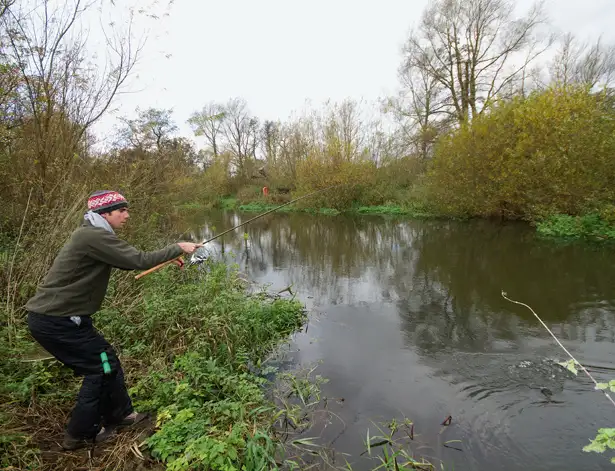
A cast close to the fallen tree soon had Gareth’s rod tip dancing, and within moments the tip arched over and the first chub of the day was landed. Usually, he would move on to the next swim once he’d had a fish, but the swim looked too good to walk away and he had another cast, which did indeed produce a second chub.
Another fish came from the swim below and a final small chub from a swim just above the weir. All Gareth’s fish fell to baits cast close to features, and all the bites came within a few minutes of the bait hitting the water.
Buy Your Chub Fishing Tackle Online
